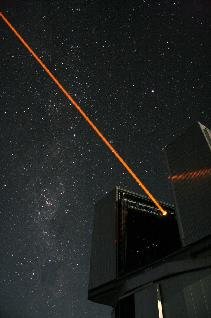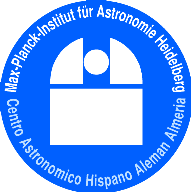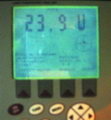PARSEC & the LGSF are in operation
First Light
|
First Science
|
|
see also ESO press photo of the laser pointing to the Galactic Center |
||
 |
The LGSF has been run successfully in both service and visitor modes and has provided Strehl ratios in excess of 20% in the K-band. Operation of the laser is totally transparent to the observer. During the afternoon it is started up by a Laser Specialist. Then when observing begins, the Telescope Instrument Operator takes over. During the night the TIO uses a control panel to make sure that the laser continues to run smoothly so that it is available whenever it is needed. The Night Astronomer, who runs the camera and adaptive optics system, coordinates with the TIO when the laser guide star is needed for observations. And the observer can just sit back and acquire high resolution data. |
|||
PARSEC (without cover) a few months before the European acceptance test in 2004 |
Photos of the PARSEC laser system (right), and of the power meter (below) showing the highest single mode 589nm power that has been achieved. Triplet quenchers were used to reach this output level; normally they will be not be used, limiting the output to about 17W.
|
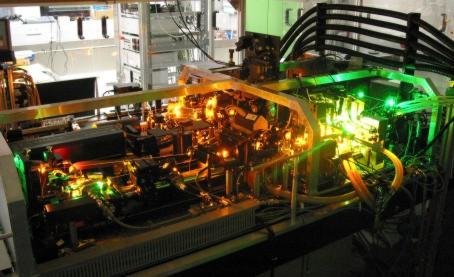 |
|
During the development stages of PARSEC |
Photos of the power meter (below) and of the prototype laser system (right) during the Laser Selection Test in March 2002. At this stage we were still using a 70W Argon ion laser to pump the amplifier.
|
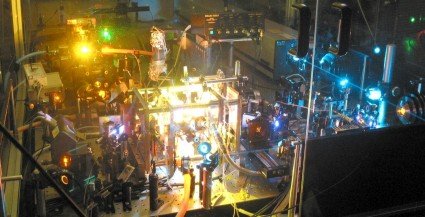 |
|
Links to related projects
- ALFA - the laser guide star adaptive optics project built by MPE/MPIA for the 3.5-m telescope at Calar Alto, Spain
- CONICA - the first VLT AO science camera, which will be used the the NAOS adaptive optics system
- SPIFFI - an integral field spectrometer for the VLT which will be used with the MACAO adaptive optics system
